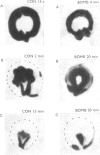Abstract
1. In the anaesthetized dog bombesin had a potent antidiuretic effect, and sometimes arrested urine flow completely. Threshold doses, by i.v. infusion, were of the order of 0·5-1 (ng/kg)/minute. Antidiuresis was the result of a reduction in glomerular filtration rate provoked by a fall in intraglomerular hydrostatic pressure. This, in its turn, was due to afferent vasoconstriction.
2. The spasmogenic effect of bombesin on the smooth muscle of the afferent arterioles was directly demonstrated by the radioactive microspheres technique and indirectly by the 85Kr washout method and by [3H]-p-aminohippurate clearance. The vascular compartment most sensitive to bombesin was that of the outer cortical zone, especially in its external half.
3. Filtration fraction decreased under the influence of bombesin, indicating that the effect of the polypeptide on postglomerular arterioles was, if present, only of minor importance.
4. At high infusion rates (above 6 (ng/kg)/min), bombesin produced a decrease in [3H]-p-aminohippurate extraction. The effect of the polypeptide on fractional distal delivery of sodium varied with the dose: at moderate infusion rates it decreased, at high infusion rates it increased. The total glucose appearing in urine following a glucose load was sharply reduced by bombesin. However, the glomerular filtration rate/maximum tubular glucose transport ratio did not show any appreciable change.
5. Afferent vasoconstriction produced by bombesin was accompanied by an intense activation of the renin-angiotensin system, as shown by a conspicuous increase in renin secretion, followed by increases in renin activity and angiotensin II concentration in arterial blood. When bombesin was infused into one renal artery only the infused kidney showed afferent vasoconstriction and increased renin secretion. The time-course of renin secretion produced by bombesin depended upon the rate of infusion of the polypeptide. At low rates an increased renin secretion was observed throughout the infusion period, at high rates two peaks of renin secretion could be seen, one at the beginning of the infusion, the other soon after the infusion had finished.
6. The mechanism of action of bombesin is discussed and the interest of the polypeptide as a possible hormonal regulator of the circulation and function of the kidney is pointed out.
Full text
PDF




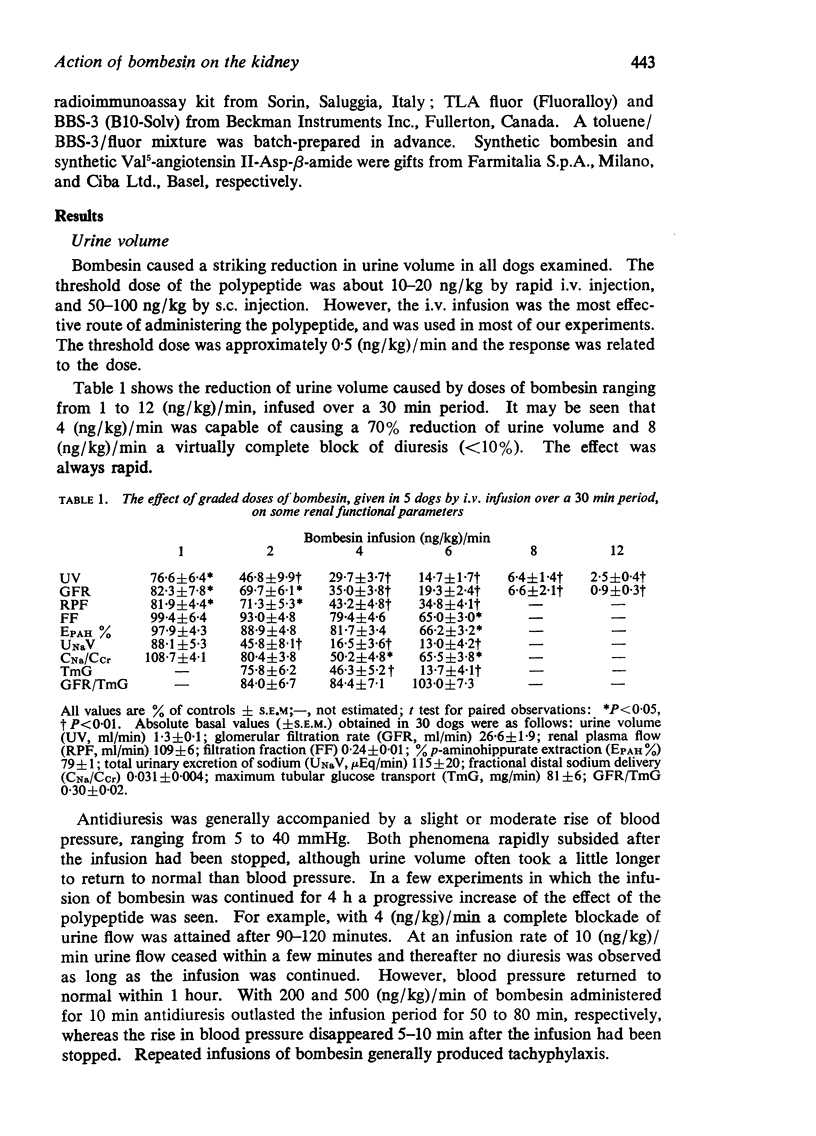







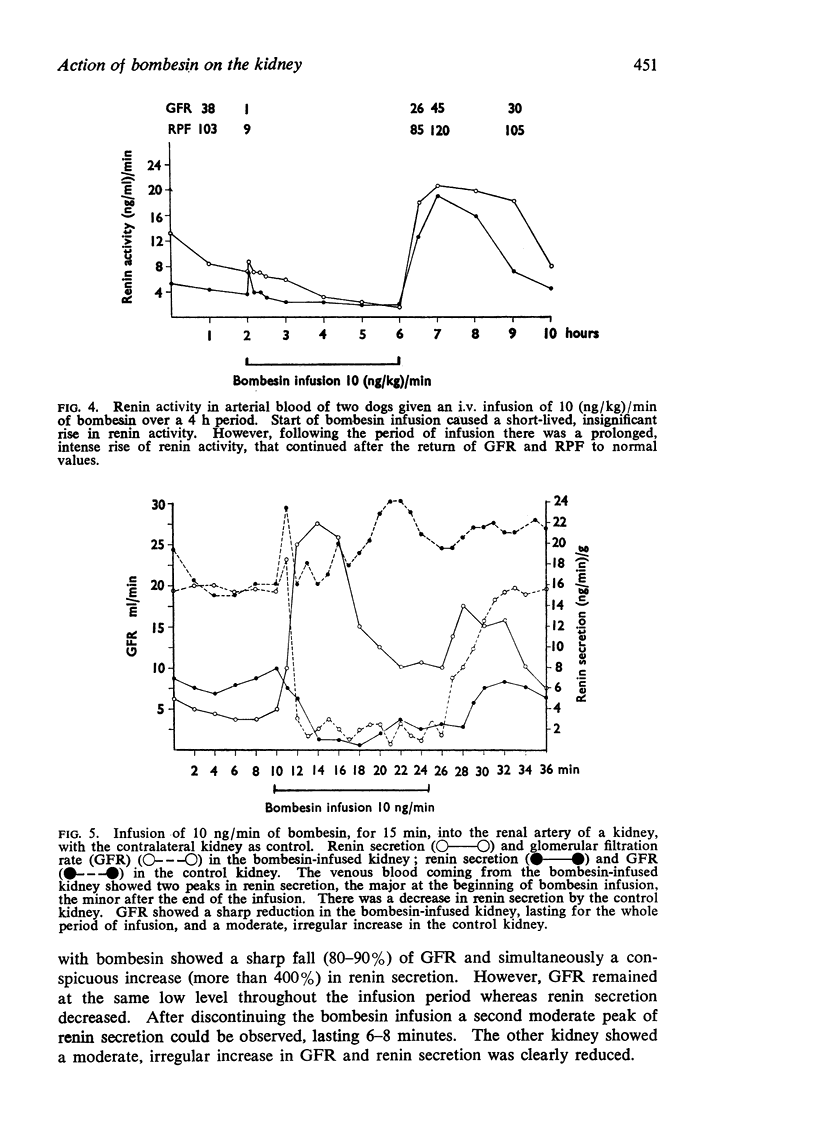
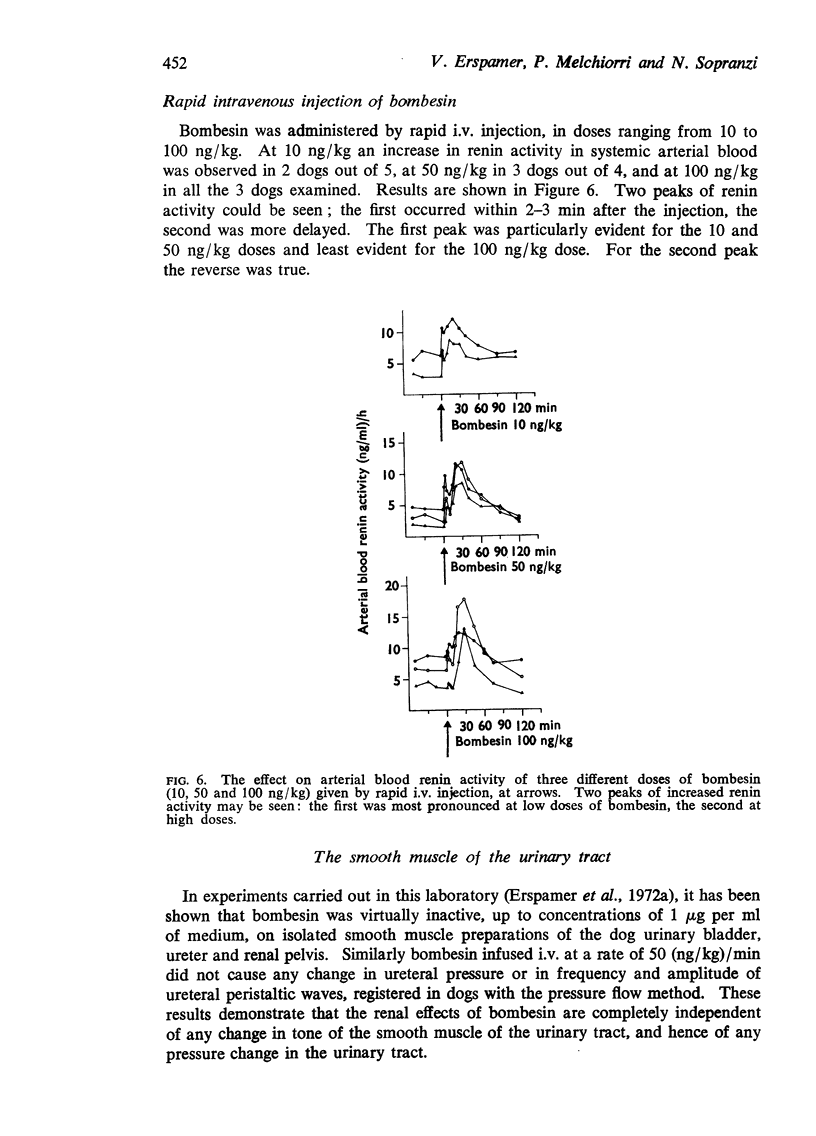

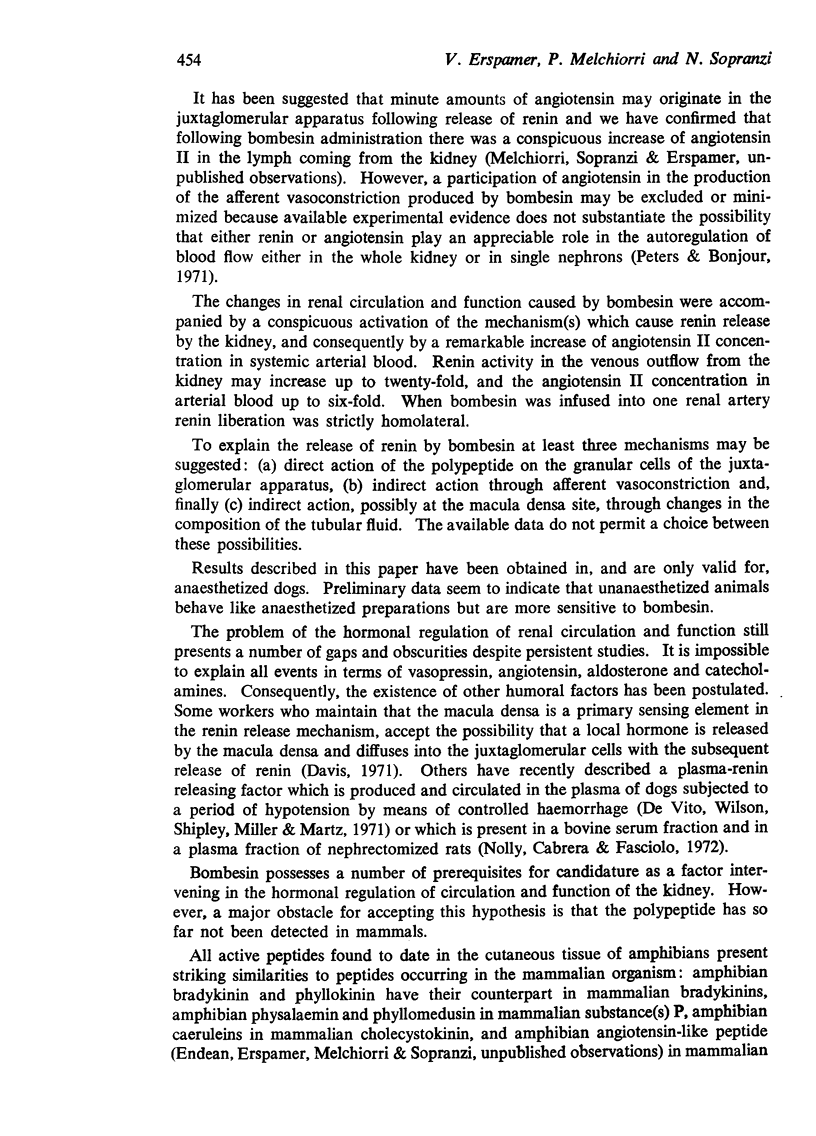

Images in this article
Selected References
These references are in PubMed. This may not be the complete list of references from this article.
- Cain M. D., Catt K. J., Coghlan J. P. Immunoreactive fragments of angiotensin II in blood. Nature. 1969 Aug 9;223(5206):617–618. doi: 10.1038/223617a0. [DOI] [PubMed] [Google Scholar]
- Carrière S., Friborg J. Intrarenal blood flow and PAH extraction during angiotensin infusion. Am J Physiol. 1969 Dec;217(6):1708–1715. doi: 10.1152/ajplegacy.1969.217.6.1708. [DOI] [PubMed] [Google Scholar]
- Davis J. O. What signals the kidney to release renin? Circ Res. 1971 Mar;28(3):301–306. doi: 10.1161/01.res.28.3.301. [DOI] [PubMed] [Google Scholar]
- De Vito E., Wilson C., Shipley R. E., Miller R. P., Martz B. L. A plasma humoral factor of extrarenal origin causing release of reninlike activity in hypotensive dogs. Circ Res. 1971 Nov;29(5):446–451. doi: 10.1161/01.res.29.5.446. [DOI] [PubMed] [Google Scholar]
- Erspamer V., Erspamer G. F., Inselvini M., Negri L. Occurrence of bombesin and alytesin in extracts of the skin of three European discoglossid frogs and pharmacological actions of bombesin on extravascular smooth muscle. Br J Pharmacol. 1972 Jun;45(2):333–348. doi: 10.1111/j.1476-5381.1972.tb08087.x. [DOI] [PMC free article] [PubMed] [Google Scholar]
- Erspamer V., Erspamer G. F., Inselvini M., Negri L. Occurrence of bombesin and alytesin in extracts of the skin of three European discoglossid frogs and pharmacological actions of bombesin on extravascular smooth muscle. Br J Pharmacol. 1972 Jun;45(2):333–348. doi: 10.1111/j.1476-5381.1972.tb08087.x. [DOI] [PMC free article] [PubMed] [Google Scholar]
- HANDLEY C. A., MOYER J. H. Significance of the GFR/TmG ratio. Am J Physiol. 1955 Jan;180(1):151–155. doi: 10.1152/ajplegacy.1954.180.1.151. [DOI] [PubMed] [Google Scholar]
- HANDLEY C. A., SIGAFOOS R. B., LA FORGE M. Proportional changes in renal tubular reabsorption of dextrose and excretion of p-amino-hippurate with changes in glomerular filtration. Am J Physiol. 1949 Oct;159(1):175–180. doi: 10.1152/ajplegacy.1949.159.1.175. [DOI] [PubMed] [Google Scholar]
- Haber E., Koerner T., Page L. B., Kliman B., Purnode A. Application of a radioimmunoassay for angiotensin I to the physiologic measurements of plasma renin activity in normal human subjects. J Clin Endocrinol Metab. 1969 Oct;29(10):1349–1355. doi: 10.1210/jcem-29-10-1349. [DOI] [PubMed] [Google Scholar]
- McNay J. L., Abe Y. Redistribution of cortical blood flow during renal vasodilatation in dogs. Circ Res. 1970 Dec;27(6):1023–1032. doi: 10.1161/01.res.27.6.1023. [DOI] [PubMed] [Google Scholar]
- Nolly H. L., Cabrera R. R., Fasciolo J. C. Renin releasing activity of a blood plasma fraction. Experientia. 1972 Apr 15;28(4):418–419. doi: 10.1007/BF02008312. [DOI] [PubMed] [Google Scholar]
- Slotkoff L. M., Logan A., Jose P., D'Avella J., Eisner G. M. Microsphere measurement of intrarenal circulation of the dog. Circ Res. 1971 Feb;28(2):158–166. doi: 10.1161/01.res.28.2.158. [DOI] [PubMed] [Google Scholar]
- THORBURN G. D., KOPALD H. H., HERD J. A., HOLLENBERG M., O'MORCHOE C. C., BARGER A. C. INTRARENAL DISTRIBUTION OF NUTRIENT BLOOD FLOW DETERMINED WITH KRYPTON 85 IN THE UNANESTHETIZED DOG. Circ Res. 1963 Oct;13:290–307. doi: 10.1161/01.res.13.4.290. [DOI] [PubMed] [Google Scholar]



